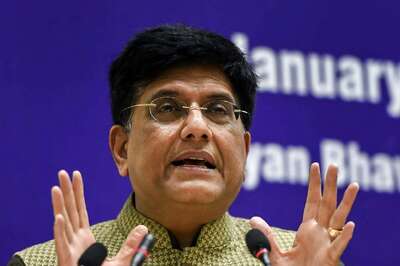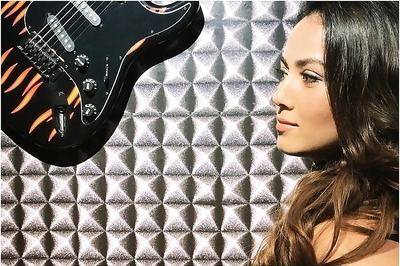
views
Advanced digital technology has changed the world of art completely. It has pushed the boundaries of people’s perception and understanding of art. With the proliferation of the internet, artists and patrons understand the vast possibilities of the virtual global network. Technology has helped artists to make their artwork more accessible to international audiences. A number of digital artists use advanced technology to make memorable installations and art. Here we get talking to two artists about digital art and how social media is aiding the industry.
How do you see digital art’s growing popularity in the art industry in India?
The Indian art world has seen a burst of artists dappling in different digital art forms. “Many artists who have primarily worked with graphic design are now creating unique works sold online as NFT, and the idea of what constitutes ‘art’ is being challenged. It is no longer just about the physical fine art technique but the vision and the increased exclusivity that digital art provides. The younger generation is keen to be with the trend and buy quirky and different renditions of what has classically been art," says Sanjana Shah, Creative Director, Tao Art Gallery. Galleries and collectors alike are more open toward this, and we see artists being given the freedom to create more within this limitless medium.
“The use of digital tools and technology in art is a natural progression and it’s only set to increase in India as well as elsewhere. Whereas in the initial days, it was about using technology to assist or innovate upon existing forms and mediums, today we are at a place where digital art has moved ‘beyond the frame’ and into the realm of immersive audio-visual and spatial experiences," says Rahul Singh Yadav, Co-founder and Chief Curator – Floating Canvas Company.
What are the new forms of digital art?
On one end of the spectrum, we have illustrations, sketches, doodles and paintings that make use of digital tools and technology to varying degrees. “On the other end, we have artists and multidisciplinary practitioners blending images, videos, light, sound, spaces and code to create dynamic, interactive and immersive experiences. These can take the form of events, installations, projections and engagements in physical spaces or in virtual ones like the metaverse," adds Yadav.
Also Read: Recreate Ananya Panday’s Favourite “Schezwan Cheese Dosa" At Home- Recipe Inside
The potential is unlimited, from creating traditional visuals using digital painting to combining media like photography and digital art. “AI-created digital art is also something that is now front and centre in the art world. Many museum collections now have their exclusive NFTs where you can exclusively own something that has its physical counterpart in a prestigious museum. The idea of ownership of art has been evolving, and people no longer care about the tactile of it as much as the idea of it," adds Shah. Digital Installation art that is projected on gallery walls is another interesting kind.
Do you think brand collaboration with digital artists is on the rise and it gives a boost to the art industry in India?
As consumer behaviour evolves and the time spent on digital and social media rises, brands will increasingly seek to create engagements and experiences that are tailored to digital media and virtual spaces. This trend had already been on the rise over the past few years but was accelerated exponentially by the pandemic. “From virtual fashion shows and art exhibitions to product launches and NFT drops, brands have definitely upped their collaboration with digital creators and this is only going to grow. Apart from financial agency, what these collaborations also offer digital artists and creators is a chance to expose their work to a far wider audience," feels Yadav.
Most galleries and platforms are now promoting digital artists, and there are even more residencies for this kind of art. “Galleries need to evolve and support this movement to stay relevant and continue to promote art as it is seen today. Many big-name brands like Nike and Coca-Cola have channelled this NFT craze in their collaborations to release exclusive on-brand digital artwork NFTs. The added value of the brand name, along with the art, is a huge selling point to entice loyal fans," believes Shah.
How is social media aiding the digital art landscape?
Social media is critical for the promotion of digital art. It allows people to see first-hand the work of artists, and considering it is a digital medium, the visuals are on-point compared with photographs of fine art paintings. “Since most digital artists were first just digital content creators, they now have large followings on social media due to the visual narrative they developed over the years. This gives them an edge in terms of audience pull and popularity. It aids them in showcasing their works in an almost digital gallery space and cuts the need for middlemen," opines Shah.
What are the most widely accepted techniques of digital art?
Digital art is an ever-evolving landscape with new tools and techniques emerging almost every day. “While software tools that aid in sketching, illustrations and photo effects are already in wide use, adoption of video- and animation-related tools are also becoming increasingly commonplace. Software that aids in the creation of 3D objects and spaces is something that has definitely taken off in recent times and is gaining traction. Its applications range from creating abstract and generative art to hyperreal video game environments and virtual spaces," notes Yadav.
However, Shah feels digitally created art that emulates techniques of oil or acrylic painting and photography are the most popularly accepted at the moment. People are familiar with both, and they still adhere to the traditional idea of visual aesthetics. The Indian audiences, in particular, are still looking at a comfortable transition into this unknown terrain and digital art that still appeases relatively traditional aesthetics works well. So 2D and 3D digital paintings are digitally created but still physically tangible. Is it usually tougher to sell something purely by seeing it virtually it’s important to have a physical rendition of that visual so people can feel better connected to it.
Read all the Latest Lifestyle News here



















Comments
0 comment